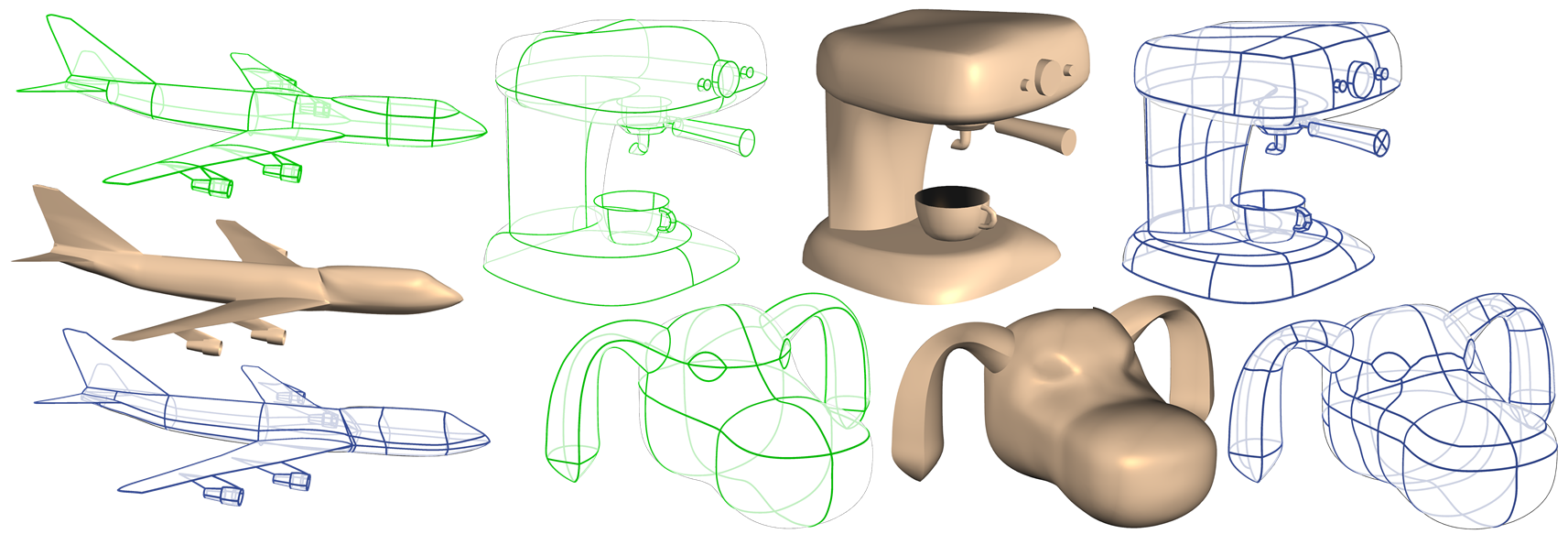Nathan Carr - Adobe
Tao Ju - Washington University, St. Louis

We present FlowRep, an algorithm for extracting descriptive compact 3D curve networks from meshes of free-form man-made shapes. We infer the desired compact curve network from complex 3D geometries by using a series of insights derived from perception, computer graphics, and design literature. These sources suggest that visually descriptive networks are cycle-descriptive, i.e their cycles unambiguously describe the geometry of the surface patches they surround. They also indicate that such networks are designed to be projectable, or easy to envision when observed from a static general viewpoint; in other words, 2D projections of the network should be strongly indicative of its 3D geometry. Research suggests that both properties are best achieved by using networks dominated by flowlines, surface curves aligned with principal curvature directions across anisotropic regions and strategically extended across sharp-features and isotropic areas. Our algorithm leverages these observation in the construction of a compact descriptive curve network. Starting with a curvature aligned quad dominant mesh we first extract sequences of mesh edges that form long, well-shaped and reliable flowlines by leveraging directional similarity between nearby meaningful flowline directions. We then use a compact subset of the extracted flowlines and the model’s sharp-feature, or trim, curves to form a sparse, projectable network which describes the underlying surface. We validate our method by demonstrating a range of networks computed from diverse inputs, using them for surface reconstruction, and showing extensive comparisons with prior work and artist generated networks.
@article{59,
author = {Gori, Giorgio and Sheffer, Alla and Vining, Nicholas and Rosales, Enrique and Carr, Nathan and Ju, Tao},
title = {FlowRep: Descriptive Curve Networks for Free-Form Design Shapes},
journal = {ACM Transaction on Graphics},
year = {2017},
volume = {36},
number = {4},
doi = {http://dx.doi.org/10.1145/3072959.3073639},
publisher = {ACM},
address = {New York, NY, USA}
}

 Results surfaced using [Pan 2015].
Results surfaced using [Pan 2015].
 Comparing original networks (green), which are then surfaced, remeshed and used as input, with our results (blue).
Comparing original networks (green), which are then surfaced, remeshed and used as input, with our results (blue).
Note: some of the input models shown are copyrighted by third parties and used with their permission. See the Acknowledgements section of our paper for a list of third-party sources.
